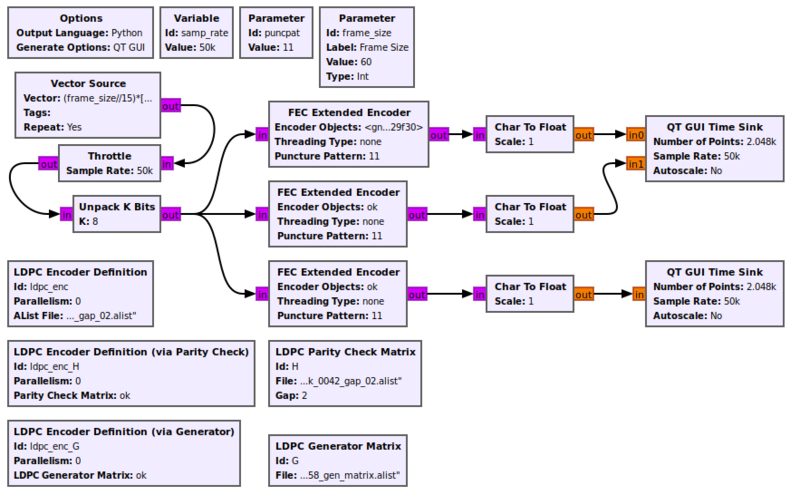FEC Extended Encoder: Difference between revisions
Jump to navigation
Jump to search
(add Parameters and example flowgraph) |
|||
| Line 1: | Line 1: | ||
[[Category:Block Docs]] | [[Category:Block Docs]] | ||
Forward Error Correction (FEC) is a common technique used in telecommunication systems to control error in the data transmission over noisy transmission channels. The key concept is to encode the signal in a redundant way by using Error Correcting Code (ECC) in the transmitter; this allows the receiver to detect a limited number of error bits in the transmitted signal and often to correct these errors without the need of re-transmitting the signal. | |||
== Parameters == | == Parameters == | ||
; Encoder Objects | ; Encoder Objects | ||
: | : Object defined by an LDPC_Encoder_Definition block | ||
; Threading Type | ; Threading Type | ||
: | : options: [capillary, ordinary, none] | ||
; Puncture Pattern | ; Puncture Pattern | ||
: | : default: '11' | ||
== Example Flowgraph == | == Example Flowgraph == | ||
Latest revision as of 14:50, 3 December 2020
Forward Error Correction (FEC) is a common technique used in telecommunication systems to control error in the data transmission over noisy transmission channels. The key concept is to encode the signal in a redundant way by using Error Correcting Code (ECC) in the transmitter; this allows the receiver to detect a limited number of error bits in the transmitted signal and often to correct these errors without the need of re-transmitting the signal.
Parameters
- Encoder Objects
- Object defined by an LDPC_Encoder_Definition block
- Threading Type
- options: [capillary, ordinary, none]
- Puncture Pattern
- default: '11'
Example Flowgraph
This flowgraph can be found at [1]
Source Files
- Python files
- [2]
- Block definition
- [3]
